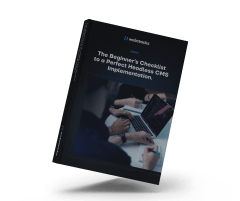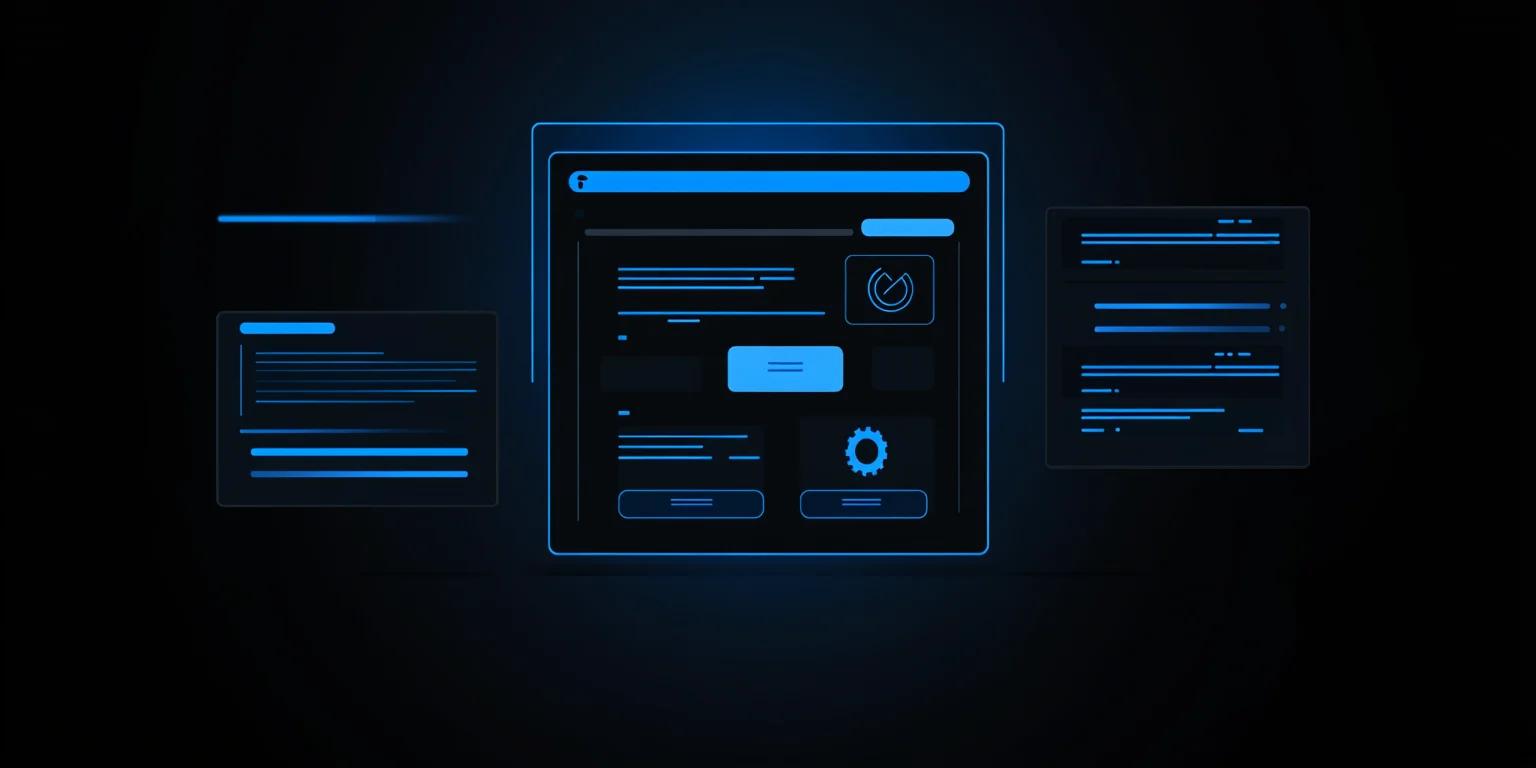Understanding how to use AI in UX design is part of the process for UX designers and business stakeholders. AI offers ways to improve design workflows, increase efficiency, and enhance user experiences.
This guide explores practical methods to incorporate AI tools into your UX design processes.
In brief:
- Enhance UX design by integrating AI tools to improve workflows and user experiences.
- Use AI for user research analysis, design element generation, and automating repetitive tasks to increase efficiency.
- Implement AI in rapid prototyping and validation to accelerate design iterations and predict user behaviors.
- Use AI to enhance accessibility and reduce bias for more inclusive and user-centric designs.

Key Applications of AI in UX Design
Using AI in UX design changes how designers solve problems and improve user experiences, especially in creating engaging and interactive designs such as interactive landing pages. Key applications include:
- User Research Analysis: AI tools can quickly process large amounts of user data, helping designers identify patterns and anticipate future behaviors. This provides deeper insights into user expectations and pain points, guiding more informed design decisions.
- Predictive Heatmaps: AI-powered heatmaps can predict where users will focus their attention.
- Design Element Generation: AI tools offer libraries of customizable icons, color palettes, and typefaces, allowing designers to match these elements to the brand identity. AI solutions can generate editable UI designs from text prompts, simplifying the design phase and enabling rapid prototyping, regardless of whether you're using HubSpot CMS or WordPress.
- Automating Repetitive Tasks: AI automates repetitive tasks, allowing designers to focus on strategic and creative aspects of their projects. AI tools automate routine design tasks and data validation, improving efficiency. AI can also assist in drafting wireframes, reducing time needed for initial design stages and enabling more iteration.
How to Start Using AI in Your UX Design Process
To integrate AI into your UX design process:
- Start with simple tasks: Use AI for creating user personas or drafting microcopy. This approach helps you become comfortable with AI capabilities without disrupting your workflow.
- Progress to more complex tasks: As you gain confidence, employ AI tools for activities like generating initial design drafts or planning workshop agendas.
- Refine outputs continuously: Provide detailed context in your prompts to enhance the quality of AI responses. Build a library of effective prompts to save time and improve consistency across projects. Iterate on AI outputs—don't settle for the first result. Keep refining, and you'll find your AI tools becoming invaluable partners in your design process.
Using AI for Rapid Prototyping and Validation
AI significantly speeds up rapid prototyping and validation in the design process. AI tools let you:
- Generate UI mockups and wireframes: Quickly create mockups from simple text prompts or sketches, allowing you to explore multiple design concepts without detailed elaboration. The swift transition from idea to prototype enables faster design iterations.
- Enhance designs with dynamic UI generation and feedback analysis: AI can predict user behavior and focus areas using AI-powered heatmaps and analytics, allowing you to refine your interface.
- Benchmark designs and optimize using user insights: AI tools help benchmark designs against industry standards and optimize them using user insights.

How AI Enhances Design Accessibility and Reduces Bias
AI is a powerful ally in enhancing accessibility and reducing bias in UX design. AI technologies, especially when integrated with modern content management systems like AI and Headless CMS, are changing how designers approach inclusivity, which makes sure digital products are accessible to all users, regardless of their abilities or backgrounds.
AI's Role in Improving Accessibility
AI tools use machine learning to:
- Scan web content for accessibility issues: Enable real-time adjustments by implementing features such as text-to-speech and optimized keyboard navigation, essential for users with disabilities.
- Facilitate dynamic adjustments: Offer adjustments like color contrast and text resizing, providing a more inclusive experience for visually impaired users.
Techniques for Decreasing Design Bias
AI plays a significant role in identifying and reducing bias in design:
- Detects patterns of bias: By analyzing user interactions and design choices, AI can detect patterns of bias, enabling designers to create more balanced and inclusive products.
- Assists in spotting bias: AI tools provide digital experiences are equitable and fair.
Integrating these AI-driven techniques helps designers address unconscious biases and foster environments where all users feel represented and understood.
Practical Considerations for Designing with AI
When incorporating AI into your UX design process, it's important to balance AI capabilities with human expertise. While AI can automate tasks and analyze large datasets, your creativity and empathy remain irreplaceable. The collaboration between AI and human intuition is the cornerstone of effective and ethical design.
Interface Design for AI Features
Designing interfaces with AI features involves:
- Utilizing AI tools: Streamline UI element creation and automate repetitive tasks, allowing you to focus on strategic aspects of design.
- Ensuring intuitive interfaces: It's essential to keep AI-driven interfaces intuitive and user-friendly. Incorporating best practices not only enhances user experience but can also improve your on-page SEO strategies for AI, making your AI solutions more discoverable.
Maintaining a clear understanding of user tasks and constraints enables you to create interfaces that integrate AI capabilities effectively while enhancing the overall user experience.
Moreover, considering how these features might be implemented across different CMS platforms is crucial. For example, when deciding between Contentful vs AEM, it's important to evaluate how each platform supports AI integration to enhance the overall user experience.
Designing AI Solutions for Specific User Needs
AI's power lies in its ability to personalize and tailor experiences to individual users. AI tools can simulate user interactions: Provide insights into user preferences and behaviors.
Understanding these needs allows you to design AI solutions that meet or exceed user expectations. It's vital to maintain transparency about how AI features operate and handle data, fostering trust and ensuring ethical design practices.
Thoughtfully integrating AI into your design process enables you to create solutions that are both efficient and empathetic, meeting the nuanced needs of your users.

Use AI for a Competitive Advantage
Starting small, refining continuously, and balancing AI with human intuition enables you to create exceptional user experiences. Incorporating AI into your UX design process provides significant benefits, and enhances productivity, creativity, and inclusivity.
See the Webstacks difference: Schedule a brief discovery call today. Discover how we can transform your website into a high-performance, scalable digital solution tailored to your needs. Visit Webstacksto get started.




